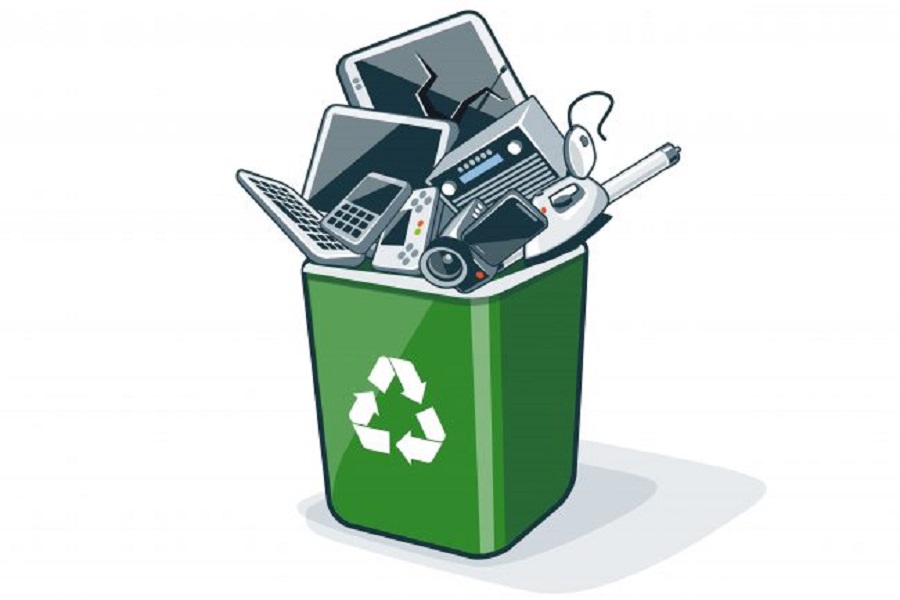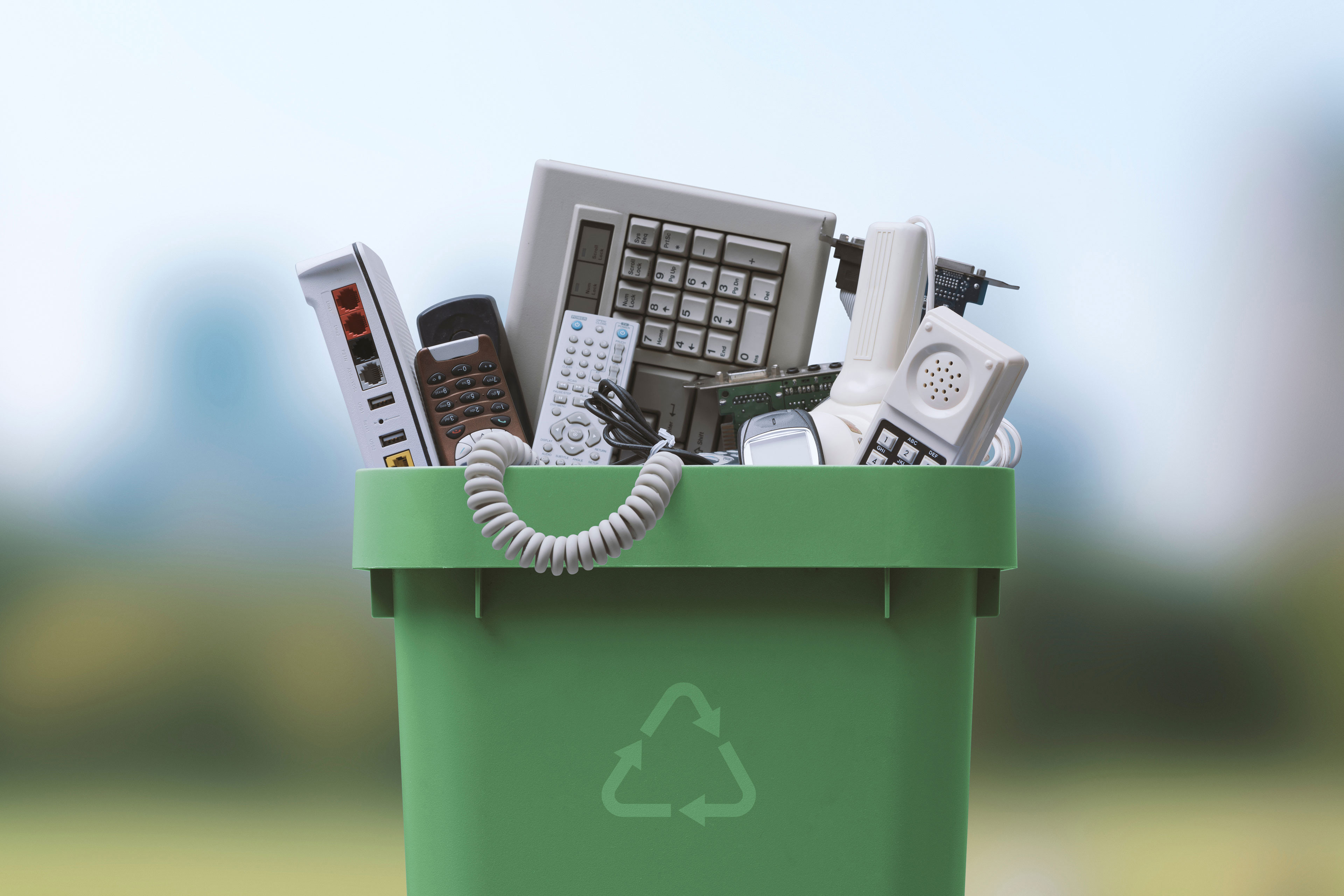Environmental Stewardship Facilitated: Select R2 Certification Electronic Devices Recycling
Environmental Stewardship Facilitated: Select R2 Certification Electronic Devices Recycling
Blog Article
Elevate Your E-Waste Management With R2 Accreditation: a Comprehensive Overview
One secret technique to boost e-waste monitoring practices is by obtaining R2 qualification. By exploring the processes and benefits linked with R2 certification, a much deeper understanding of just how it can revolutionize e-waste administration techniques emerges, losing light on a course in the direction of sustainability and moral disposal techniques.
Value of E-Waste Management

When e-waste is not handled correctly, these toxic substances can leak into the environment, causing injury to wild animals and potentially getting in the food web, presenting dangers to human health. The incorrect disposal of e-waste contributes to contamination and greenhouse gas exhausts, exacerbating environment adjustment and ecological destruction.

Advantages of R2 Certification

First of all, R2 certification enhances trustworthiness by showcasing a company's dedication to sustainable techniques. It ensures consumers, partners, and stakeholders that the firm sticks to rigorous standards for e-waste administration - r2 certification. This trustworthiness can bring about increased trust fund and improved partnerships with customers that prioritize environmental responsibility
Secondly, R2 qualification assists minimize risks linked with incorrect e-waste disposal. By following the stringent guidelines stated by the accreditation, companies can minimize the possibility of information violations, ecological contamination, and legal repercussions. This proactive strategy safeguards the firm's online reputation and lessens potential responsibilities.
Lastly, R2 certification demonstrates a commitment to ecological stewardship - r2 certification. By properly managing digital waste with accredited procedures, companies contribute to the conservation of sources, reduction of contamination, and promotion of a circular economic situation. This dedication not only benefits the environment yet likewise lines up with advancing consumer expectations for sustainable service techniques
R2 Certification Refine Overview
Having actually established the advantages of R2 accreditation in advertising trustworthiness, danger mitigation, and environmental stewardship, it is necessary to now lay out the detailed process associated with acquiring this certification. The R2 certification process starts with a thorough review of the company's operational plans and treatments to make sure conformity with the R2 requirement. This initial evaluation is important in identifying any type of spaces that need to be resolved before continuing additionally.
As soon as the organization's techniques align with the R2 basic demands, an independent third-party auditor carries out an on-site audit to evaluate the implementation and efficiency of these techniques. This audit includes an extensive evaluation of documents, meetings with staff, and physical examinations of facilities to verify compliance.
Adhering to a successful audit, the organization obtains an accreditation decision based on the auditor's findings. If approved, the organization is provided R2 accreditation, demonstrating its dedication to liable e-waste monitoring. It is necessary to keep in mind that maintaining R2 accreditation calls for recurring conformity with the standard's requirements and periodic audits to make review sure continued adherence to ideal practices in e-waste recycling and disposal.
Key Criteria for R2 Compliance
An important aspect of accomplishing R2 conformity is making sure that all electronic waste address (e-waste) handling centers meet stringent environmental and safety criteria. To abide by R2 demands, companies need to abide by vital requirements that concentrate on responsible e-waste administration techniques. These requirements consist of executing a documented environmental, health, and safety administration system, guaranteeing the protected handling of data-containing tools, and performing thorough downstream due persistance to track the final destination of e-waste materials.
In addition, R2 conformity necessitates the appropriate testing, repair, and recycling of electronic devices to expand its useful life and lessen environmental influence. Facilities seeking R2 accreditation must additionally focus on worker health and security by supplying required training, personal safety devices, and a risk-free working environment. In addition, preserving detailed records of e-waste processing tasks and frequently undertaking audits by approved certifying bodies are vital parts of demonstrating ongoing compliance with R2 standards.
Influences of Sustainable E-Waste Practices
The implementation of sustainable e-waste methods in conformity with R2 conformity not only makes certain ecological and safety standards are fulfilled however likewise substantially affects the overall lifecycle of digital items. By sticking to R2 standards, digital waste monitoring processes become a lot more efficient, lowering the environmental footprint of digital items. Lasting e-waste practices facilitate the appropriate disposal of digital elements, guaranteeing that unsafe materials are handled sensibly and do not finish up contaminating the environment.
In addition, sustainable e-waste methods can add to job development in the recycling and repair markets, cultivating economic check my source growth while advertising ecological duty. Generally, the fostering of lasting e-waste methods under R2 qualification serves as a crucial step towards accomplishing an extra ecologically sustainable electronic devices industry.
Final Thought
To conclude, carrying out correct e-waste management practices is essential for environmental sustainability and source conservation. R2 qualification plays a crucial function in guaranteeing responsible handling and disposal of digital waste. By adhering to the stringent standards stated by R2 standards, companies can not just lessen their ecological influence however additionally contribute to a much more sustainable future for generations ahead.
One key method to raise e-waste management techniques is by attaining R2 accreditation. By discovering the benefits and procedures associated with R2 accreditation, a much deeper understanding of exactly how it can reinvent e-waste management techniques arises, dropping light on a path towards sustainability and moral disposal methods.
The R2 certification process begins with a thorough evaluation of the organization's functional plans and procedures to make sure conformity with the R2 criterion. If approved, the organization is given R2 accreditation, demonstrating its commitment to responsible e-waste management. On the whole, the adoption of lasting e-waste techniques under R2 qualification serves as a vital step towards achieving a more eco lasting electronic devices sector.
Report this page